2-Pack 2025 Solar Ultrasonic Animal Repellent with Motion Detection and Deterrent Light for Yard
$60.99
Stop night raids without harsh chemicals using this 2-pack 2025 solar ultrasonic animal repellent for yard. Each unit uses a PIR motion sensor to trigger brief ultrasonic bursts and a deterrent light that can reduce cat intrusions and interrupt raccoon or skunk foraging when placed on their travel routes. Weather-resistant, IP-rated housings are designed for outdoor use, and IP65 level protection means dust tight and resistant to low-pressure water jets, so the devices are ready for seasons of rain and pollen with simple wipe-downs.
Description
If night raids from raccoons, skunks, or neighborhood cats are turning your garden into a buffet, the 2-Pack 2025 Solar Ultrasonic Animal Repellent with Motion Detection and Deterrent Light for Yard gives you a humane way to push wildlife back to the fence line using sound, light, and motion-triggered bursts. These solar units are designed for yards and beds where you want fewer visits without chemicals, and they work best as part of a layered plan that also includes sanitation and habitat tweaks, which is what university extension programs recommend for reliable wildlife control.
Key Customer Benefits
- Humane, no-mess deterrence you can feel good about. Ultrasonic and light-based cues discourage visits without traps or poisons, aligning with integrated pest management advice to start with non-chemical tactics and habitat fixes.
- Smart, motion-triggered bursts that save power and target the moment animals approach. Passive infrared sensors commonly detect movement across a wide cone and several meters, so the device only activates when it matters instead of running nonstop.
- Solar convenience for hands-off upkeep. Built-in panels recharge by day so you are not juggling cords or batteries. Many outdoor ultrasonic units are designed for set-and-forget yard use with motion and solar pairing.
- Weather-ready enclosure for year-round yard duty. Look for models around IP65 when possible, which are protected from dust and from low-pressure water jets. That rating is widely recommended for durable outdoor fixtures exposed to rain.
- Two-pack coverage that lets you cross-fire trouble spots. Placing units to cover entry points and create overlapping zones is a best practice because ultrasound travels line-of-sight and can be blocked or absorbed by landscaping.
- Nighttime deterrent light for nocturnal pests like raccoons and skunks. Motion-activated lighting adds an extra aversive cue right when after-dark visitors show up. Garden users often pair light or sprinkler scares with ultrasound for better results.
- Honest expectations, better outcomes. Research shows mixed results for ultrasonic alone, which is why success improves when you combine devices with sanitation, plant selection, and barriers. This set is a humane tool in a broader plan, not a magic wand.
Product Description
What this device is
This two-pack is a solar ultrasonic animal repellent for yard use. Each unit sits on a stake or mounts on a fence and uses three things together: a passive infrared (PIR) motion sensor to notice warm-bodied animals moving, an ultrasonic speaker that emits high-frequency sound bursts, and a deterrent light that startles night visitors like raccoons and skunks.
The motion sensor is the “brains” that wakes the device only when something enters the zone, which conserves battery power and avoids constant noise or lighting. PIR sensors work by detecting quick changes in infrared heat between two sensor halves as a warm body crosses the field of view, and the lens in front shapes that field to a wide cone, often several meters deep.
How it works in your yard
When a cat, squirrel, skunk, or raccoon cuts through the beam, the unit fires a short sequence: high-frequency sound, then flashing light. That surprise factor is the goal. Wildlife agencies and university extensions group these tools under “frightening devices,” which can interrupt foraging and push animals to choose an easier route. These devices are not a silver bullet, yet they are a humane first step in integrated pest management (IPM), where you pair deterrents with sanitation, plant choice, and simple barriers.
At night, the deterrent light earns its keep. Nocturnal animals prefer dark, quiet paths. Several practitioner guides and extension notes point out that motion-activated lights can startle raccoons and skunks because the light comes on unpredictably, which breaks their sense of safety. If you have constant floodlights, animals often adapt, so the “off, then sudden on” pattern is what helps most.
Because these are outdoor electronics, look for weather-resistant housings. Many repellers advertise ingress protection like IP65. That rating means dust-tight and protected against low-pressure water jets, which is appropriate for rain exposure and hose splash, although it is not designed for submersion.
What makes it effective and different
Motion-triggered delivery. The PIR only fires when something moves into range. That means you are not broadcasting ultrasound all day, which reduces neighborhood noise complaints and saves power. It also means the stimulus is tied to the animal’s action, which is more salient.
Layered cues instead of one trick. Evidence on ultrasonic-only devices is mixed across species and situations. A classic deer study found no protective effect for one ultrasonic model in orchards, while two peer-reviewed cat studies reported moderate reductions in cat intrusions in gardens, especially in “resident” cats that frequently visited. This device leans on a combined approach, ultrasound plus light, which better matches how extensions teach “frighten, then remove the reward, then block access.”
Solar plus two-pack coverage. Solar charging reduces maintenance, and a two-pack lets you set overlapping zones at entry points, since ultrasound travels mostly in straight lines and can be deflected or muffled by shrubs. Placing one unit near a trash area and the second along a fence gap often outperforms a single device in the center of the yard. Extension notes and wildlife manuals consistently emphasize placement, rotation, and combining tactics to slow adaptation.
Product Specifications
| Feature | Typical for this class, from current manuals |
|---|---|
| Ultrasonic frequency range | About 12.5 to 60 kilohertz, often in selectable bands or cycling modes |
| Sound pressure at device | Commonly listed around 90 to 120 decibels at the speaker grill |
| PIR motion sensor angle | About 110 to 120 degrees per face, or 360 degrees on tri-face units |
| Detection distance | Roughly 4 to 10 meters, sometimes stated as 13 to 32 feet depending on temperature, animal size, and lens |
| Effective coverage | Marketed coverage is often a conical zone per unit, with some makers quoting up to roughly 700 square feet |
| Solar panel | Small polysilicon panel around 5 volts and about 120 milliamp rated charge |
| Battery type and capacity | Rechargeable pack, commonly 3.7 volt 18650 lithium cell about 2,200 milliamp-hours. Some value models use Ni-MH packs |
| Enclosure, materials | ABS housing with stake or wall plate |
| Weather rating | Frequently IP44 for splash resistance, occasionally higher. IP65 means dust tight and resistant to low-pressure water spray |
| Operating temperature | Often listed roughly 0 to 45 degrees Celsius |
| Safety and use | Manuals advise: keep away from children, clean the panel periodically, and place the lens about 20 to 30 centimeters above ground. Dogs and young people may hear some output |
| End-of-life and markings | CE mark is commonly used to show EU conformity. WEEE symbol indicates recycling obligations. Many makers also claim RoHS compliance |
How to Use and Installation Guide
Step 1: Plan your layout before you stake anything in
Walk the area at dawn or dusk and look for tracks, droppings, flattened paths, knocked-over mulch, or torn trash bags. Those highways are where your solar ultrasonic animal repellent for yard should face. Frightening devices like motion lights and sound cues work best when they intercept animals on approach and when you combine them with cleanup and exclusion. That is the core of university IPM advice for raccoons and other urban wildlife.
Step 2: Choose the right height and angle
Place each unit so that the PIR lens sits roughly calf to knee height above the ground for small wildlife and a bit higher for deer trails. The Fresnel lens in front of the PIR sensor shapes a wide conical field and creates multiple detection zones. Aim the face into the path animals use, not straight across a busy sidewalk. A slight downward tilt reduces false triggers from distant traffic and focuses energy into your bed line.
PIR sensors commonly see across a wide angle, often near one-third of a full circle. Use the two-pack to create overlapping cones at entry points such as a gate and a trash corner. Rotating positions every week or two helps reduce acclimation, which deer agencies and extensions recommend with any scare device.
Step 3: Give the solar panel good sun and set power correctly
These units sip energy by day and spend it at night. Face the panel toward true south if you are in the Northern Hemisphere and give it the sunniest line of sight you can. If you cannot hit the ideal tilt, prioritize orientation first so it faces south, then adjust angle as your landscape allows. Wipe dust or pollen from the panel every few weeks so charging stays efficient.
Step 4: Select modes and sensitivity thoughtfully
Start with a middle sensitivity so the PIR does not trigger on every leaf flutter. Then test higher or lower based on real traffic in your yard. If your model offers light only, ultrasonic only, or ultrasonic plus light, begin with both outputs for a strong first impression at night. Motion-activated light adds a surprising visual cue for raccoons and other nocturnal visitors, and it pairs well with brief ultrasonic bursts.
Step 5: Placement strategies by target animal
- Raccoons and skunks: Aim units along shadowed travel routes like fence lines, bin alcoves, and the narrow strip between house and hedge. Motion-triggered lights and sound can interrupt foraging for a few days, which buys time to lock lids and remove food sources.
- Cats: Point a unit across the entry gap and flower bed where they toilet or stalk birds. Peer-reviewed field work on ultrasonic cat deterrents found a moderate reduction in intrusions, especially from regular repeat visitors, so keep the beam aimed at the habitual route and be patient through a few evenings.
- Deer: Use these devices as a short-term speed bump, not your only line. For reliable protection of high-value beds, pair with plant choice or physical fencing. Extensions consistently note that frightening devices alone are less effective for hungry deer.
Step 6: Test, then fine-tune
Walk across the target zone to confirm the light and sound trigger exactly where you expect. If the unit fires too early or too late, adjust the angle by a few degrees and retest. Remember that warm bodies trigger PIR best. Very cold nights can shorten detection range. A segmented Fresnel lens creates multiple hot zones within the cone, so small angle changes can make a big difference.
Step 7: Combine with IPM for durable results
Frightening devices are strongest when you also remove the reward and, where practical, block access. Lock or secure trash, feed pets indoors, pick up fallen fruit, and repair loose deck lattice or gaps under sheds. Simple steps like these reduce raccoon and skunk payoffs and make your deterrents feel more convincing.
Step 8: Weather and durability checks
Most solar repellers in this class use ABS housings and list an IP rating for weather. IP44 means splash-resistant in rain. IP65 means dust tight and resistant to low-pressure water jets. Do not aim sprinklers directly at the unit and always close the USB charging cap after use. If your sprinklers or heavy storms drench the area, favor higher protection language.
Step 9: Maintenance schedule
Wipe the solar panel, lens, and speaker grill with a soft cloth monthly. After severe weather or power-hungry weeks with many night triggers, top up via USB if your model supports it. Replace rechargeable cells at end of life through e-waste programs. Look for WEEE and CE marks on the label, which indicate recycling and conformity information.
Step 10: Common Issues
- Triggers constantly in daylight: Lower sensitivity and tilt slightly downward to reduce distant sidewalks or tree sway in the cone. Fresnel lenses can see many zones, so a tiny aim change helps a lot.
- No triggers at night: The battery may be low. Improve panel sun exposure, clean the panel, or perform a USB top-up.
- Animals adapt after a week: Move the unit, change modes, or add a second cue such as a sprinkler scare or repellent where deer browse. Rotation and mixing methods slow habituation.
- Neighbor’s dog reacts: Narrow the zone so the beam stays inside your yard, or use light-only mode in that direction. Courtesy matters and is recommended by wildlife control best practices.
Frequently Asked Questions
Do ultrasonic animal repellents actually work?
There is decent evidence that cats reduce their visits when an ultrasonic device is aimed across their entry route. A field study in gardens documented a moderate reduction in cat intrusions when the unit was active, so this tool can help if you place it well and give it a little time. Results are less consistent for deer and should be paired with plant choice, fencing, or other tactics. Wildlife and extension guides also note that all scare devices work best in the short term and when you rotate positions so animals do not adapt.
How long until I see results?
Expect a few days of “startle and reconsider” for regular visitors, and up to four weeks to discourage some cats from using your beds if they have a long habit of visiting. Keep the beam aimed at the exact gap or path they use and combine with cleanup and mild exclusion to speed things up.
Will this bother my own pets or my neighbor’s dog?
Dogs and cats can hear into ultrasonic ranges, though how much they react varies by the individual animal. Cats have a documented upper hearing limit around 85 kilohertz in laboratory testing; dogs hear higher frequencies than humans as well. Plan placement so the cone of sound stays inside your yard and watch your pets the first evenings. Avoid using ultrasonic devices where small pet rodents or rabbits live, since they are typically more sensitive.
Is it humane?
Yes, when used as intended. Reputable animal-welfare and wildlife resources recommend non-chemical, non-injurious deterrents such as motion-activated sound or light, combined with sanitation and exclusion. Avoid home-brew chemical concoctions or anything that risks harm.
Where exactly should I point the unit?
Aim the face slightly downward across the path animals actually use: along a fence run, at the gap under a gate, or toward a bin alcove. PIR sensors look through a Fresnel lens that creates several detection zones in a wide cone, so a small angle change can make a big difference. For best coverage with this two-pack, set overlapping cones at two entry points and move them every week or two.
Will it work on raccoons or skunks tearing up my lawn?
It can help interrupt their foraging, especially at night when the motion light fires, but you also need to remove the reward. University and state IPM pages stress that raccoons and skunks flip turf looking for white grubs, so improving lawn health and grub control reduces the payoff that keeps them coming back.
My garden is near a sidewalk. How do I avoid constant false triggers?
Start with medium sensitivity and tilt the unit a little downward so the cone does not reach the sidewalk. Because the PIR lens creates multiple detection zones, small adjustments often solve always-on problems. Trim branches that sway in front of the lens.
Are these weatherproof? What do IP44 and IP65 actually mean?
Ingress Protection ratings are standardized. IP44 is commonly used for splash resistance in rain. IP65 indicates dust tight and resistant to low-pressure water spray which is helpful near sprinklers. Do not submerge either rating. Close the USB cap after charging.
How big an area does one unit cover?
Manufacturers describe a directional cone measured in meters rather than a perfect circle. Think of it like a flashlight beam that fades with distance and can be blocked by shrubs or low walls. That is why the two-pack lets you cross-cover a gap and a bin area for better results.
Will it annoy birds or hedgehogs?
Cat-focused units used by bird-care organizations are designed to target cat hearing and are considered safe for garden wildlife when used correctly. Always follow the placement guidance and avoid pointing directly into nest boxes or roost sites.
Do deer get used to these?
Yes, deer and many other animals habituate to predictable stimuli. Extensions advise using frightening devices early when damage starts, moving them around, and pairing with proven methods such as fencing or deer-resistant plantings for longer-term protection.
Can the solar panel keep up in cloudy weather or winter?
Solar panels still charge under diffuse light when it is overcast, but output is reduced. Keep the panel clean and oriented to the best sun you have, and use the USB top-up if your model includes it during long cloudy spells.
Will this affect Wi-Fi, alarms, or phones?
Ultrasonic sound itself does not interfere with radio signals. However, some consumer reports have mentioned occasional issues with nearby electronics for certain plug-in indoor models. Outdoor, stand-alone solar units rarely cause interference, but as with any electronic, keep wiring and chargers dry and in good condition.
What if the animals ignore it after a week?
Rotate locations, change modes if your device offers light-only or combined light plus ultrasound, and add a second tactic such as a motion-sprinkler near high-value beds. Wildlife agencies consistently recommend mixing tools to prevent acclimation.
Does the device harm hearing in pets or people?
The published pet-hearing literature shows that cats and dogs detect higher frequencies than humans, but these deterrents are not designed to cause pain or damage. That said, individual sensitivity varies, so monitor pets and relocate or switch to light-only mode if you see obvious agitation. Keep units out of reach of children.
Conclusion
You want a yard that feels calm again, and you want to get there without harming wildlife or turning your evenings into a constant battle. The 2-Pack 2025 Solar Ultrasonic Animal Repellent with Motion Detection and Deterrent Light for Yard earns a place in that plan because it delivers a short, surprising cue right when animals step into your space, and it runs on free daylight.
Field evidence shows ultrasonic units can moderately reduce cat intrusions when you aim them across habitual entry routes, and wildlife agencies are clear that frightening devices work best when you rotate positions and mix methods so animals do not get used to one trick. Pair these units with cleanup, secure lids, and simple exclusion, and you will stack the odds in your favor.
If raccoons or skunks are the culprits, use the motion light to your advantage and remove the payoff that brings them back. Extension guides emphasize locking trash, feeding pets indoors at night, and managing fallen fruit or grubs, which makes your deterrents feel more convincing. For deer, treat these devices as an early speed bump, then lean on plant choice or temporary barriers where browsing is heavy, since deer often habituate to stationary scares within days or weeks.
Related products
-
2-Pack Solar Ultrasonic Animal Repeller with Motion Sensor and Strobe Light for Yard and Garden
$52.99 Buy Now -
FAYINWBO Solar Ultrasonic Animal Repeller with Siren and Flashing LEDs for Yards and Gardens
$49.99 Buy Now -
Outdoor Bird Deterrent with Motion Sensor for Pigeons and Woodpeckers
$49.98 Buy Now -
Cleanrth TSBR620 Sonic and Ultrasonic Bird Repeller with Triple Scan Technology
$74.99 Buy Now
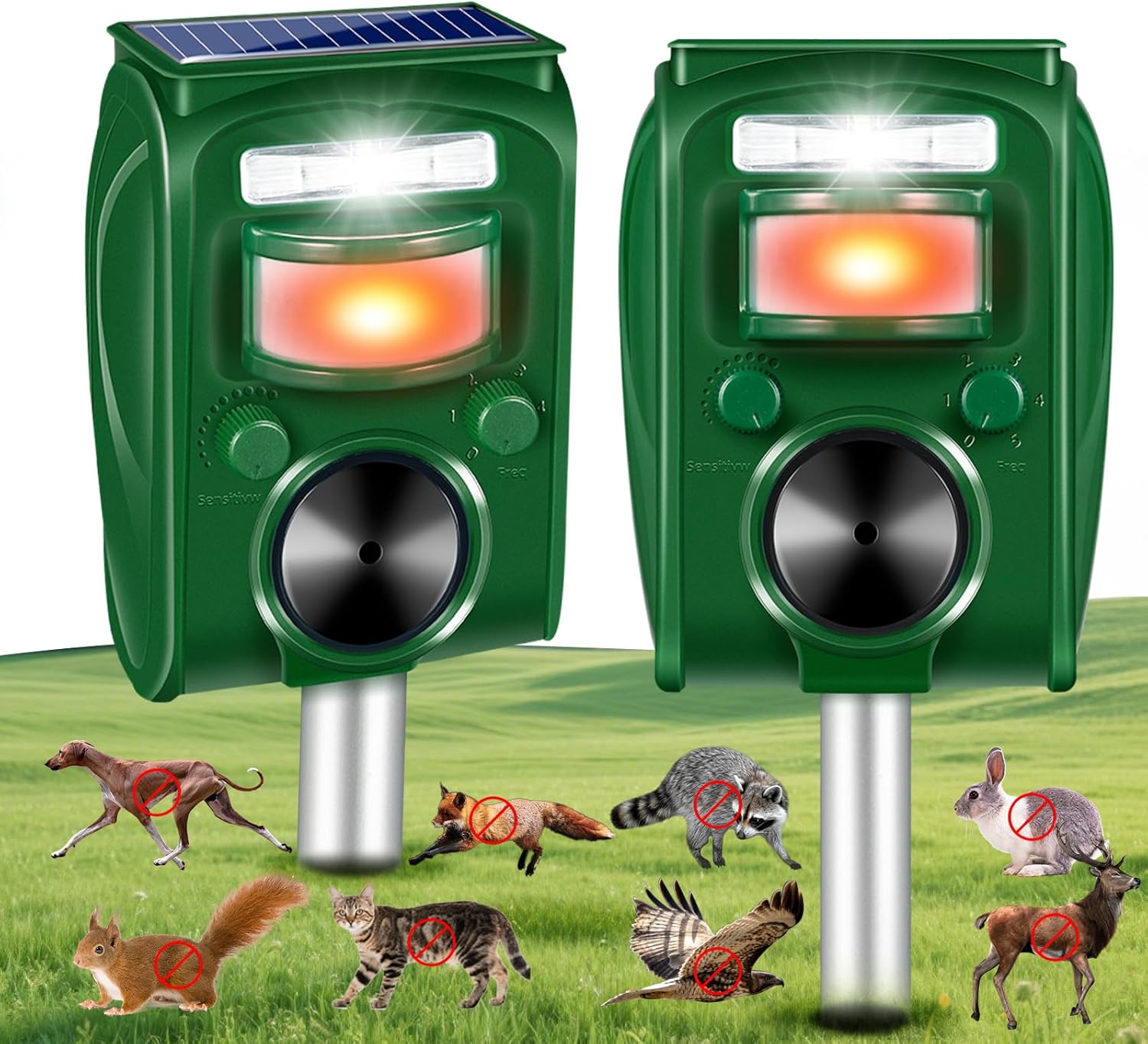
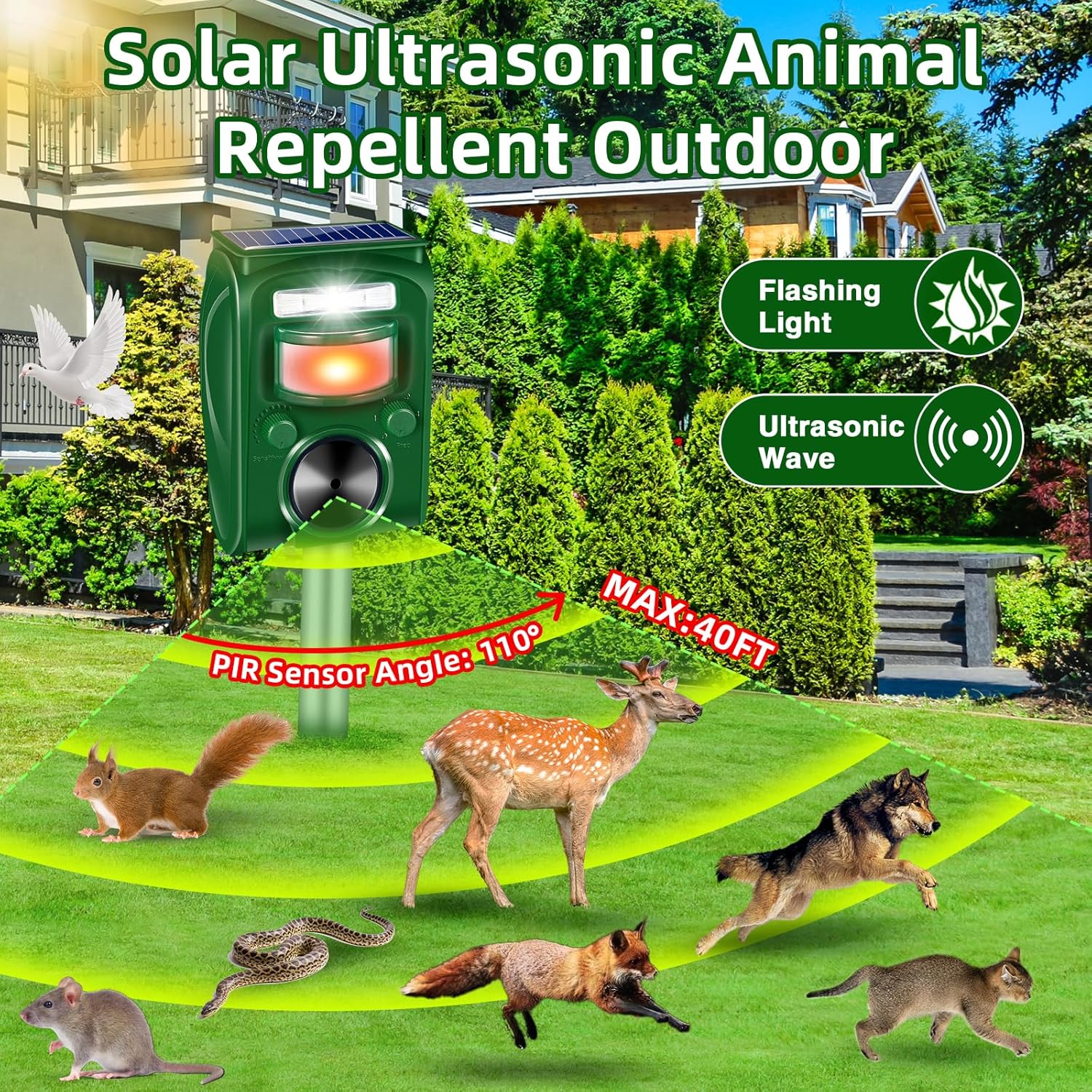
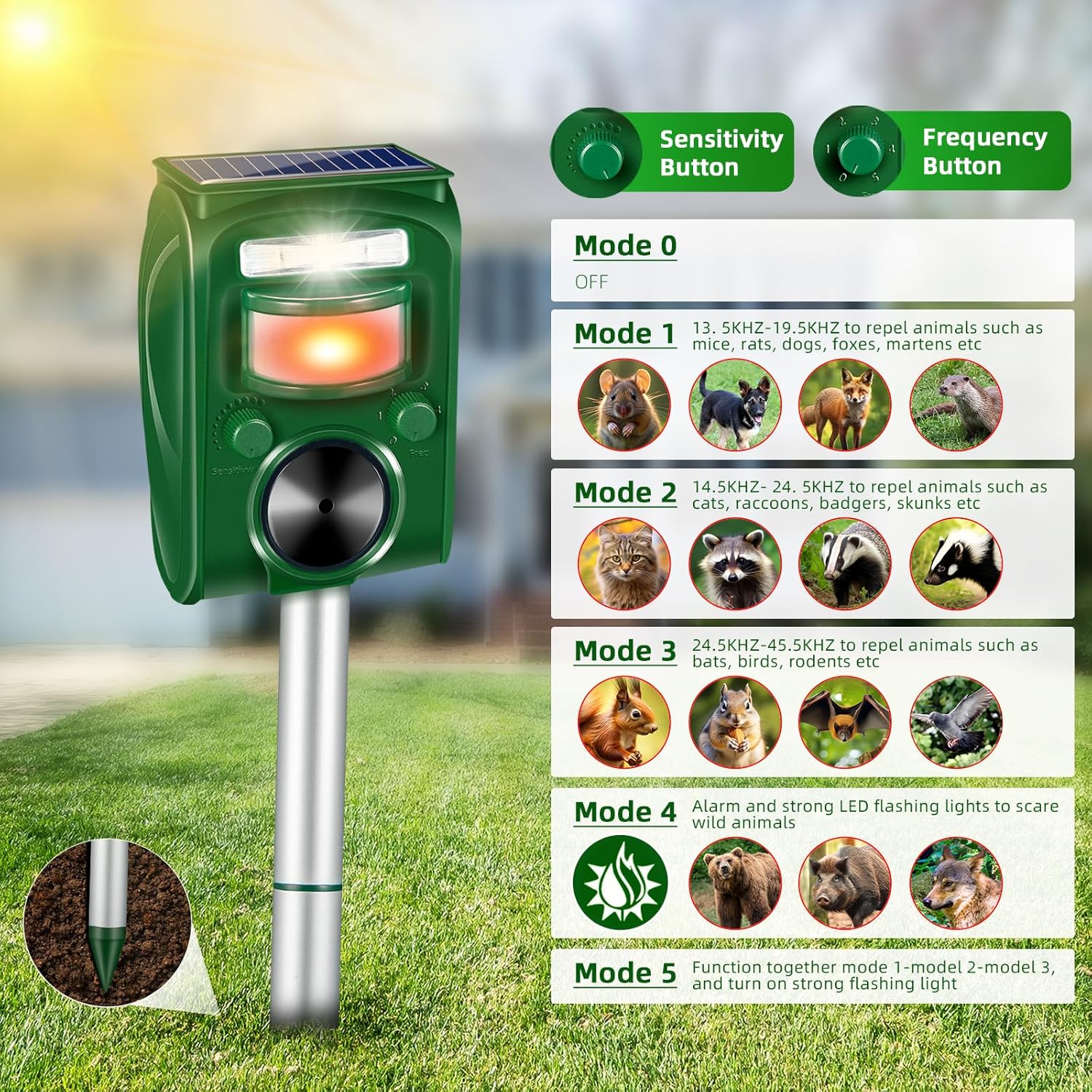
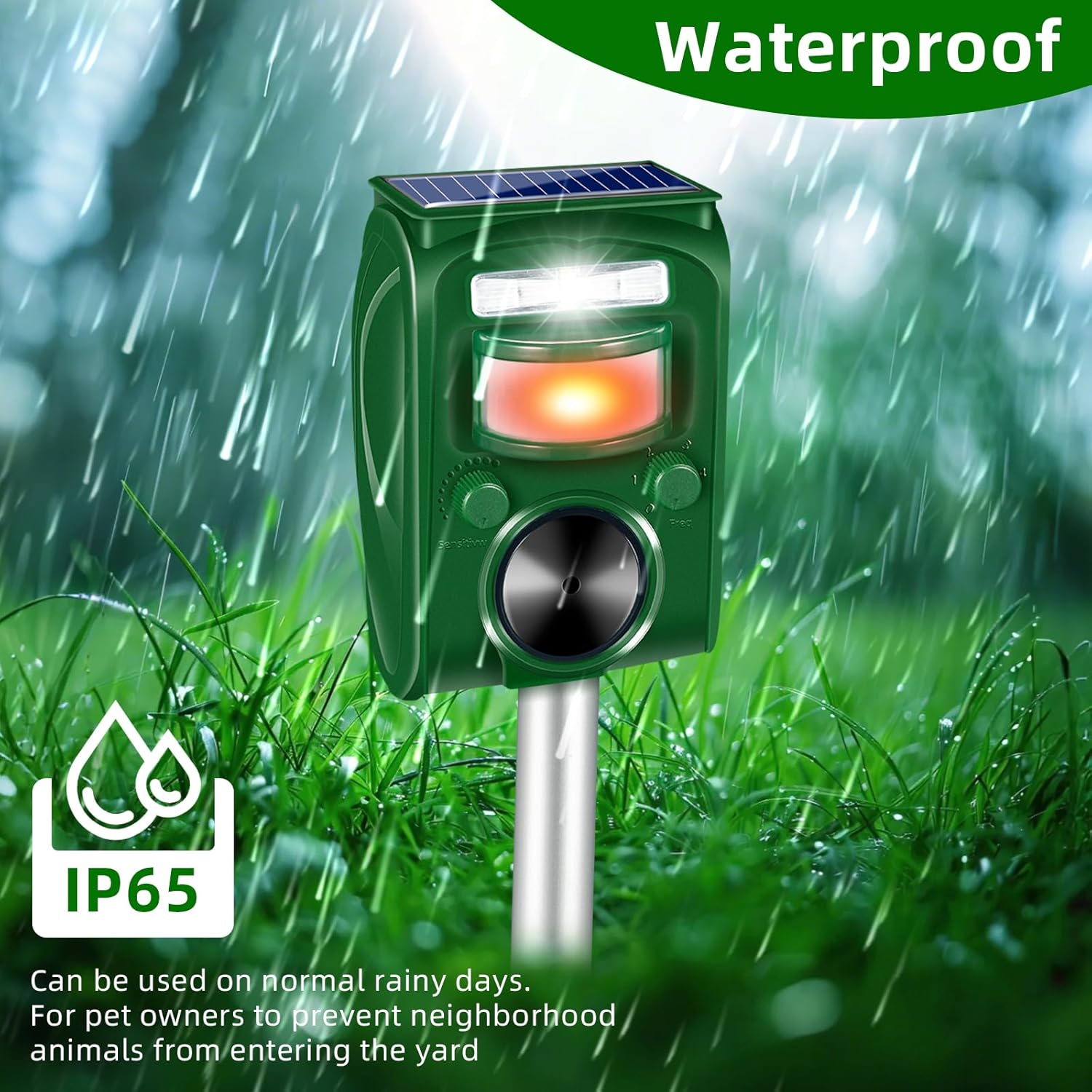
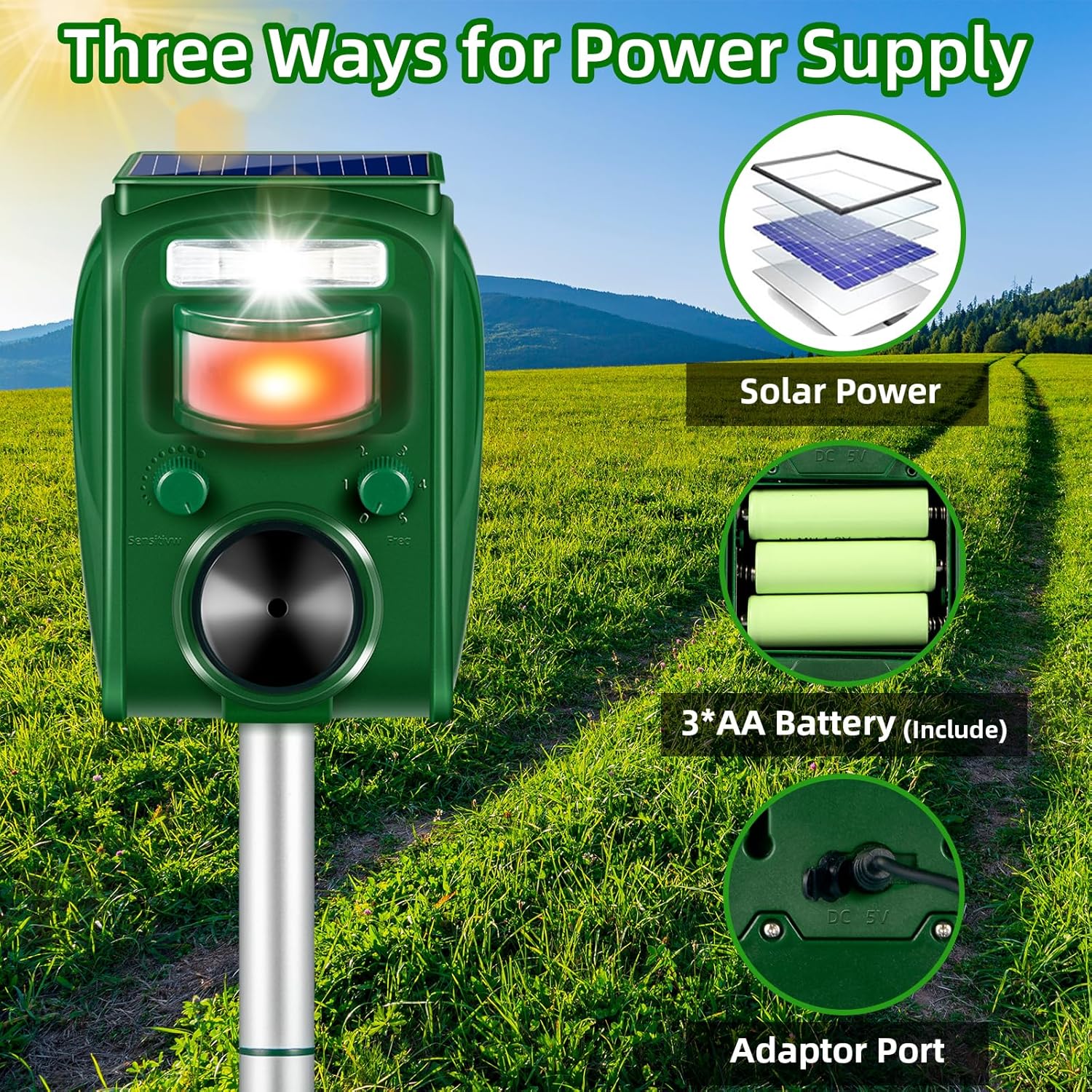
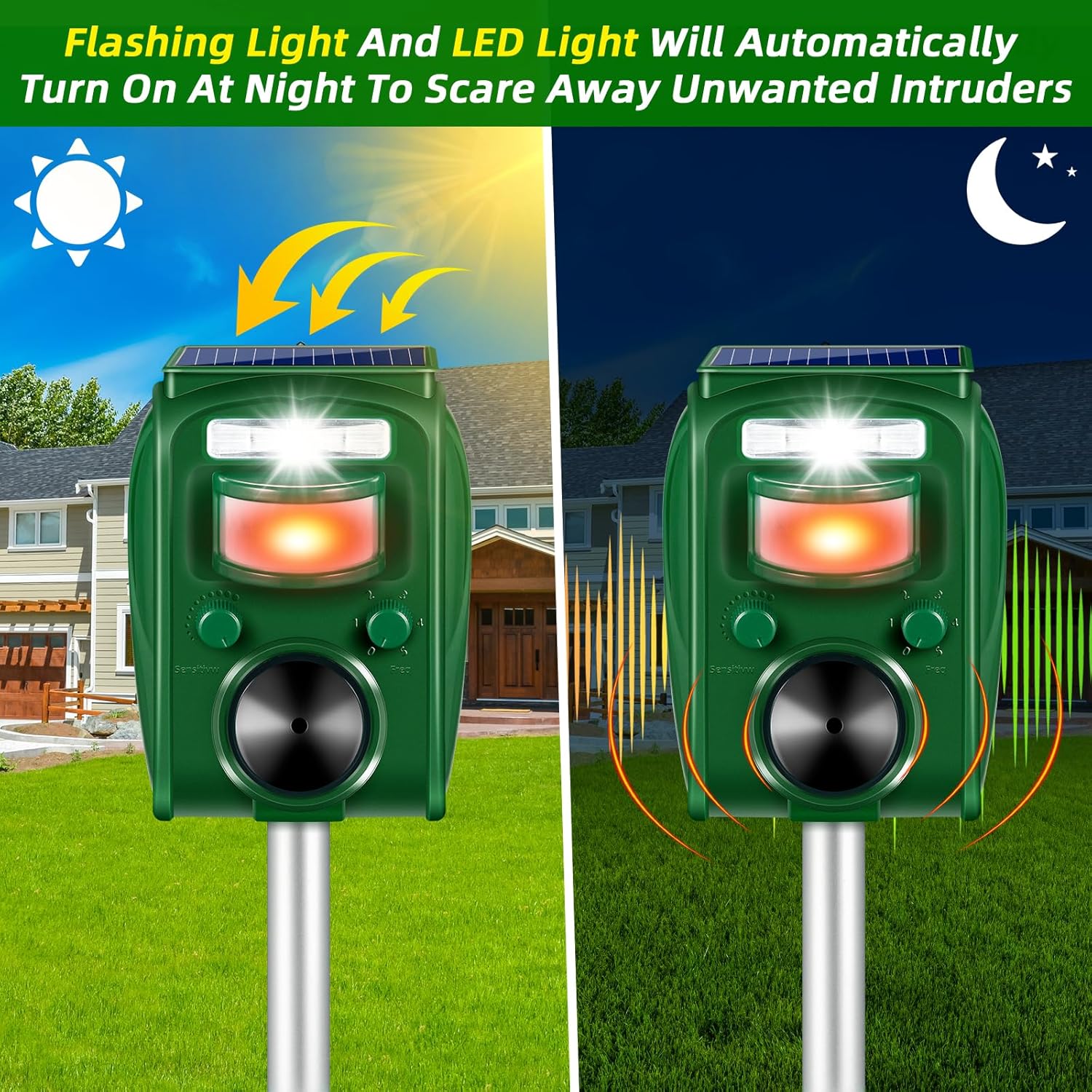
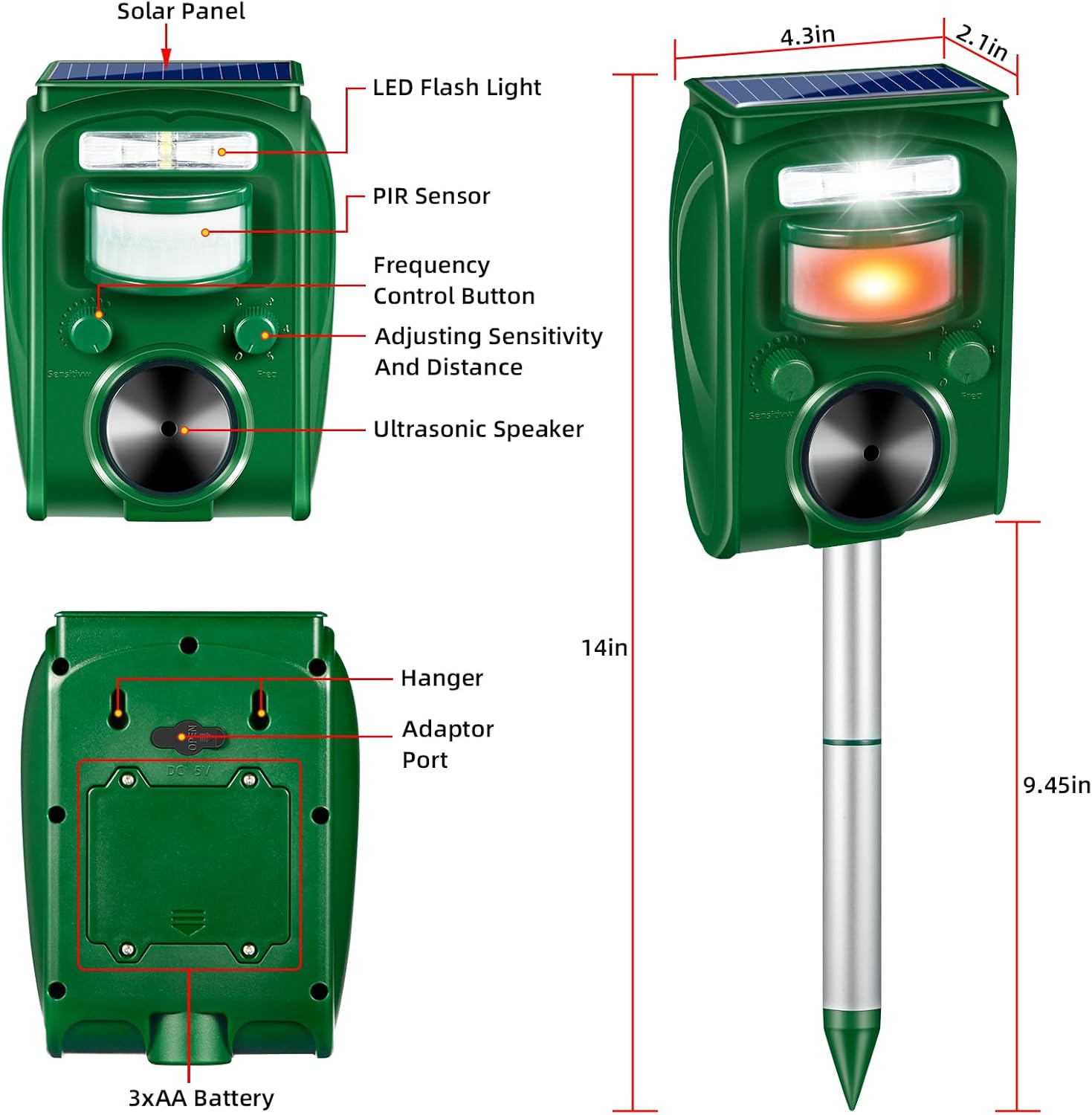
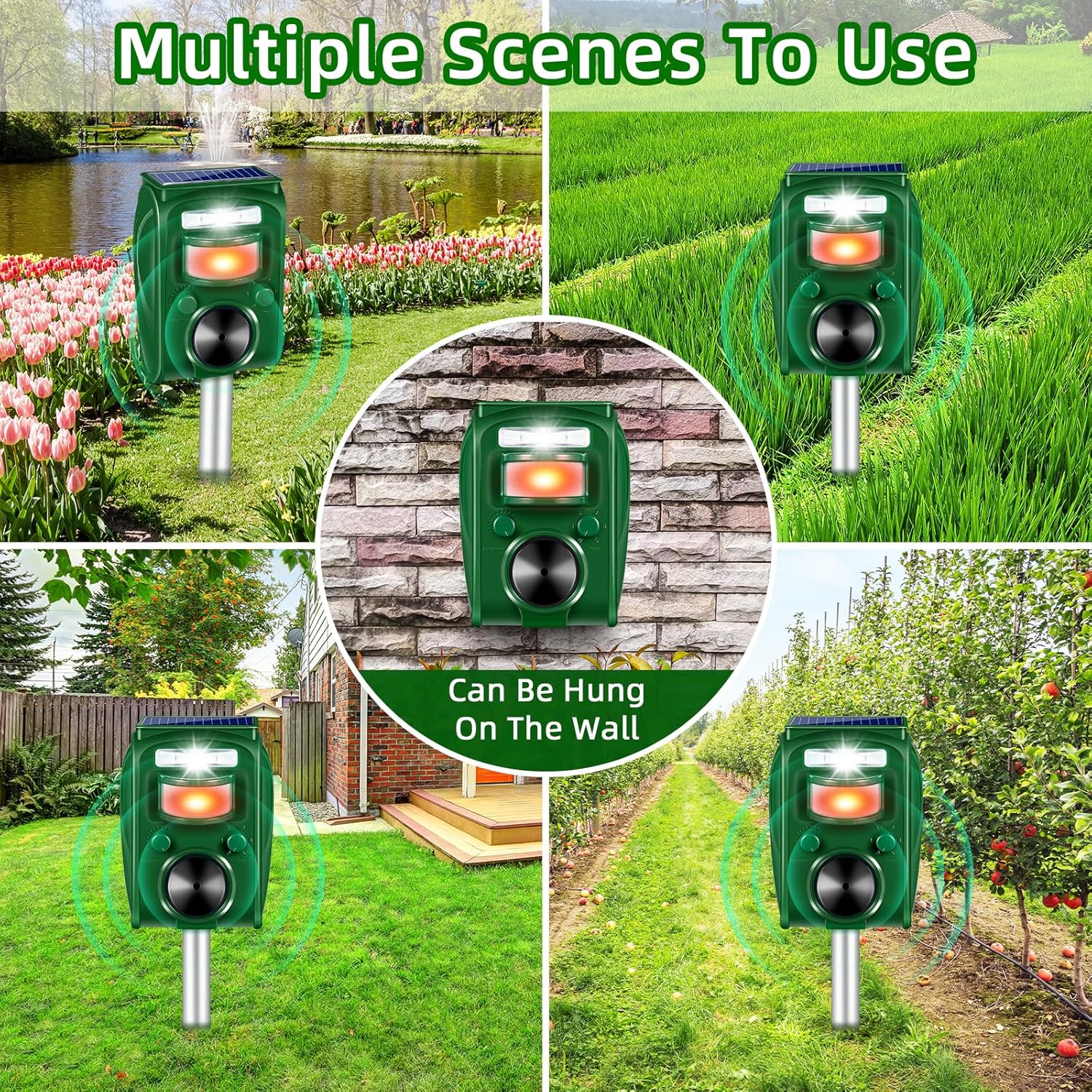
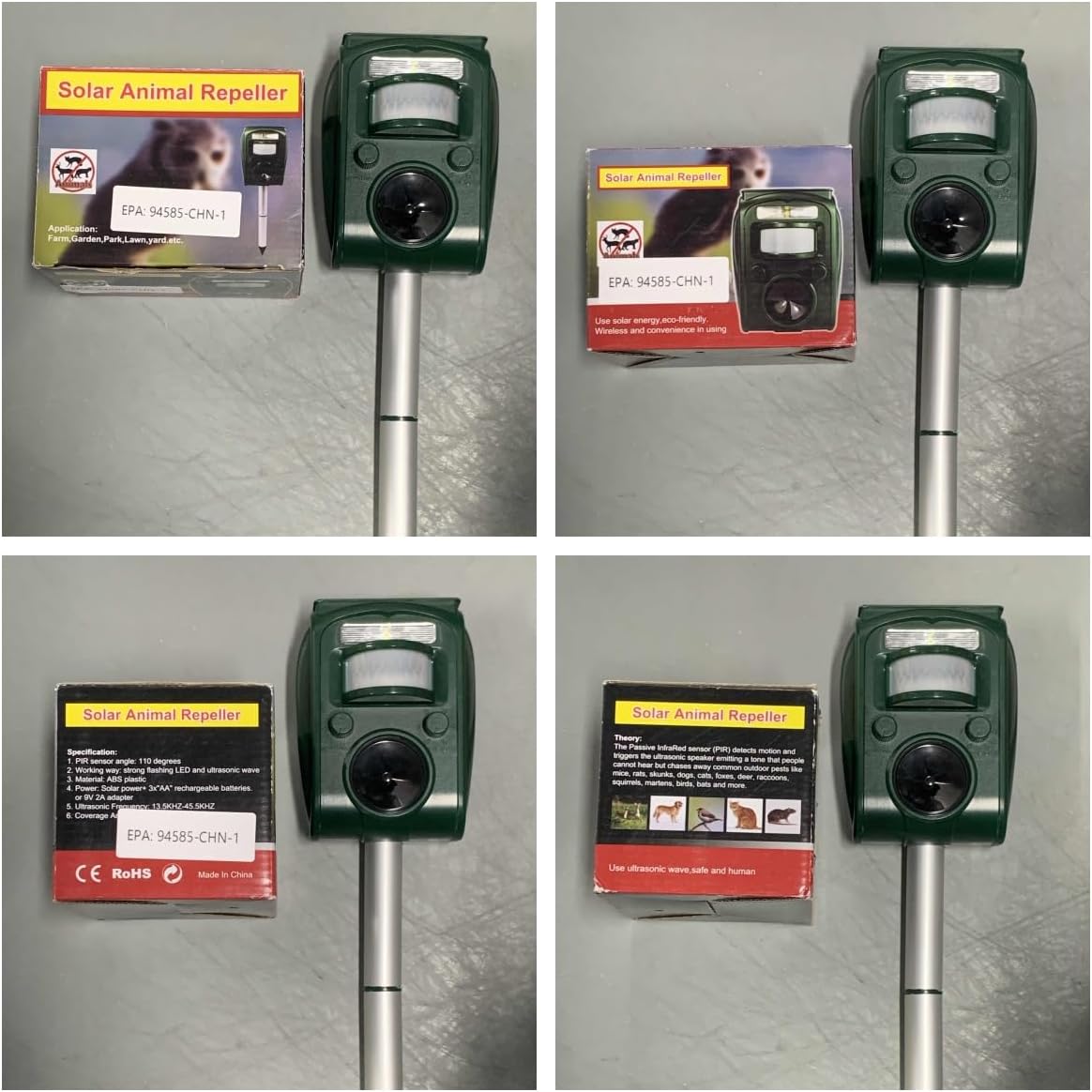
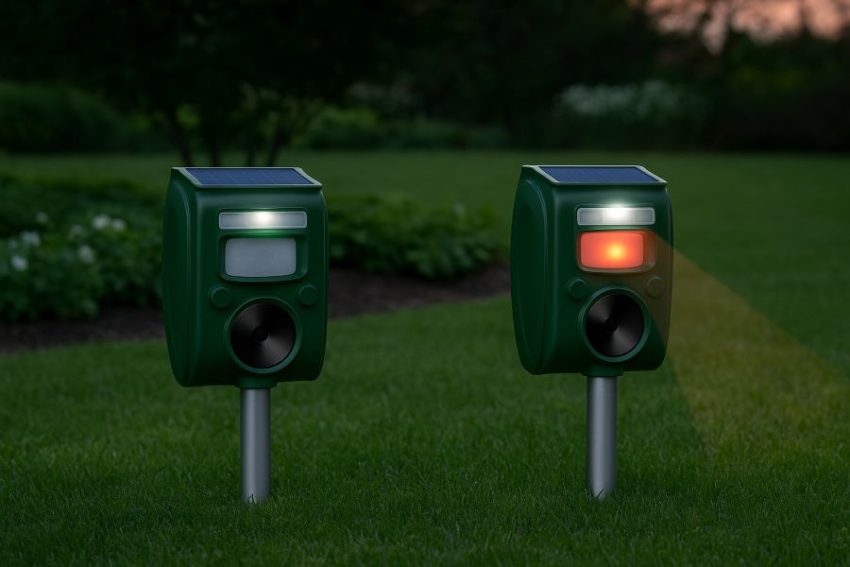
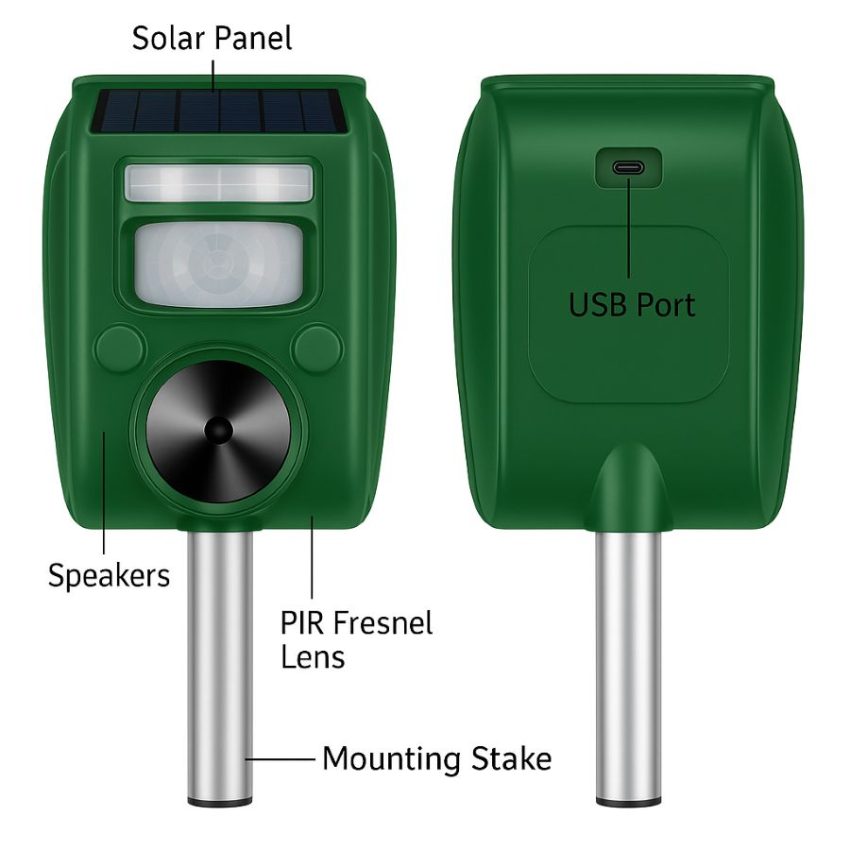
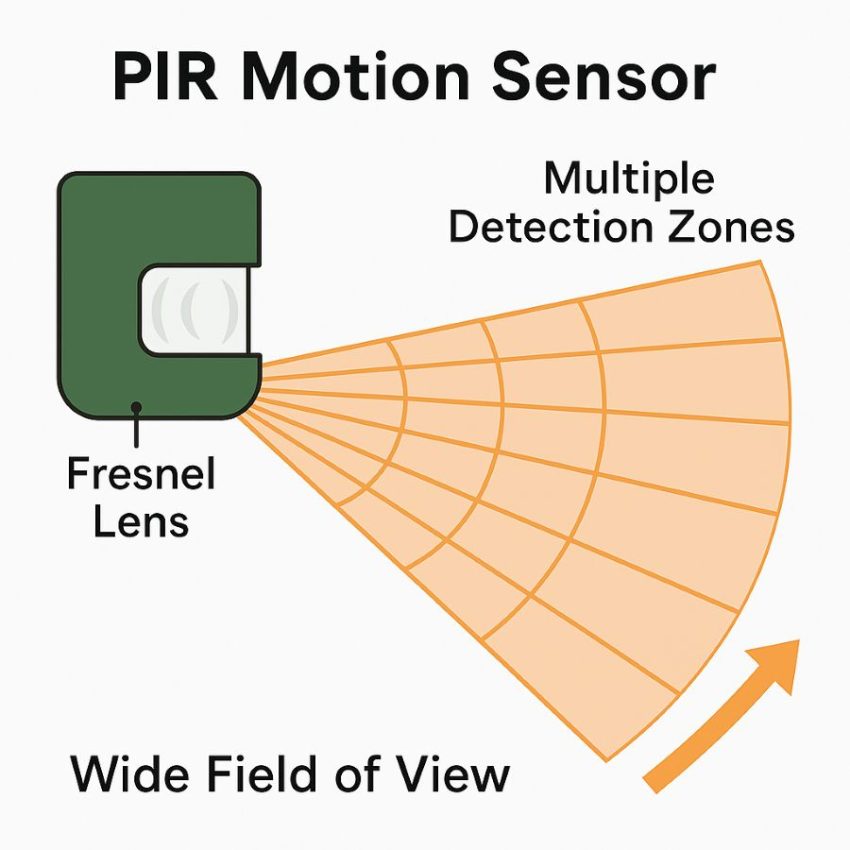
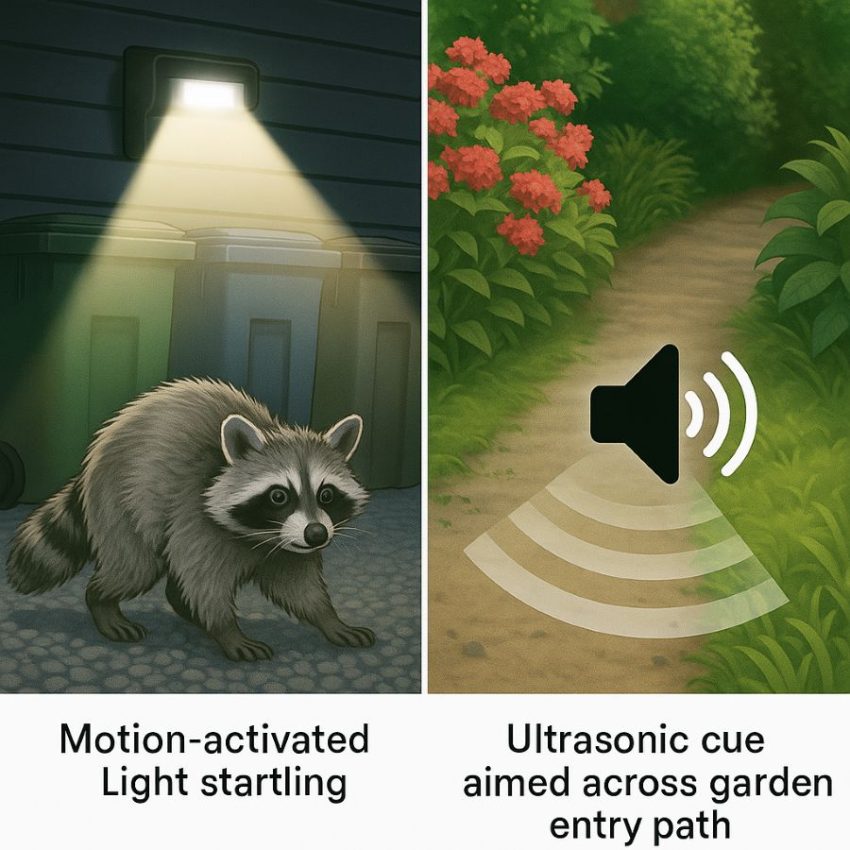
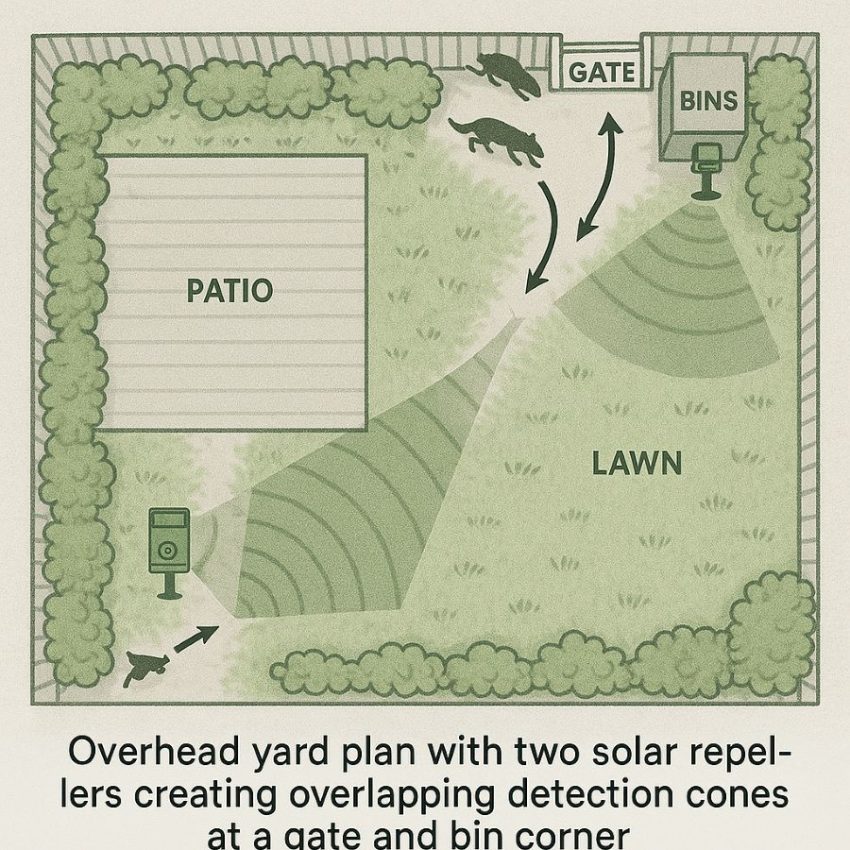
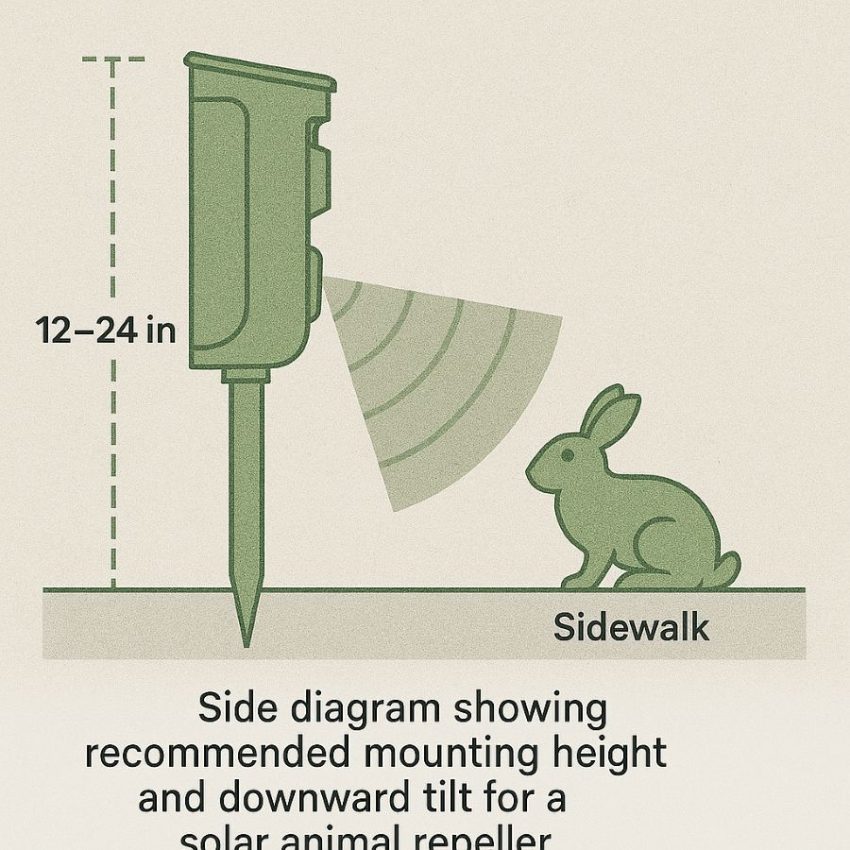
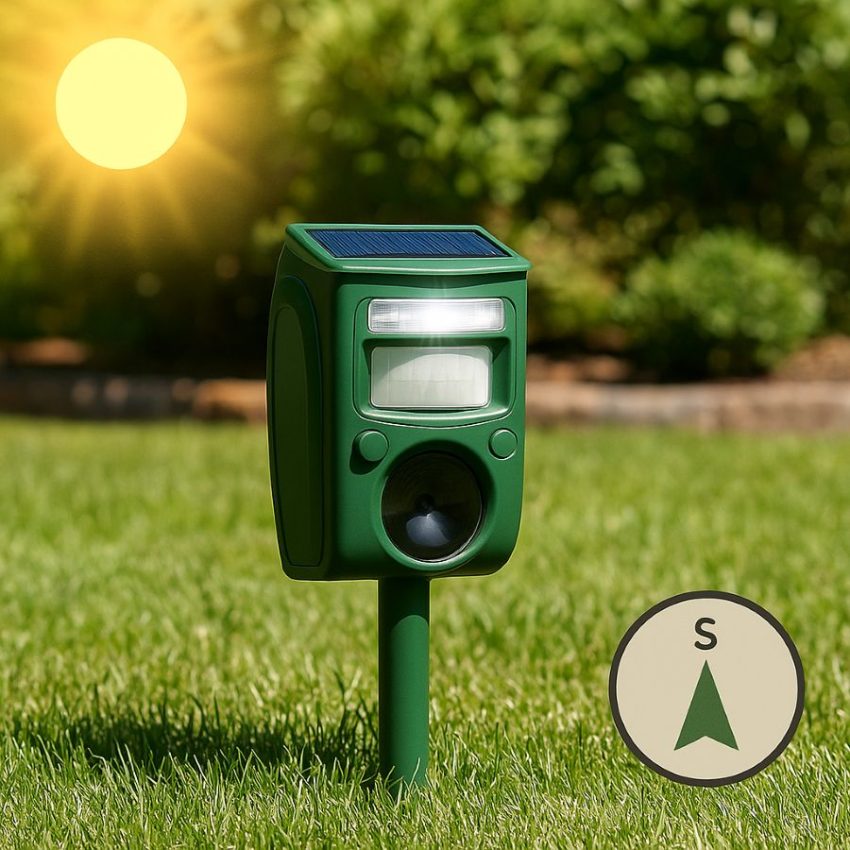
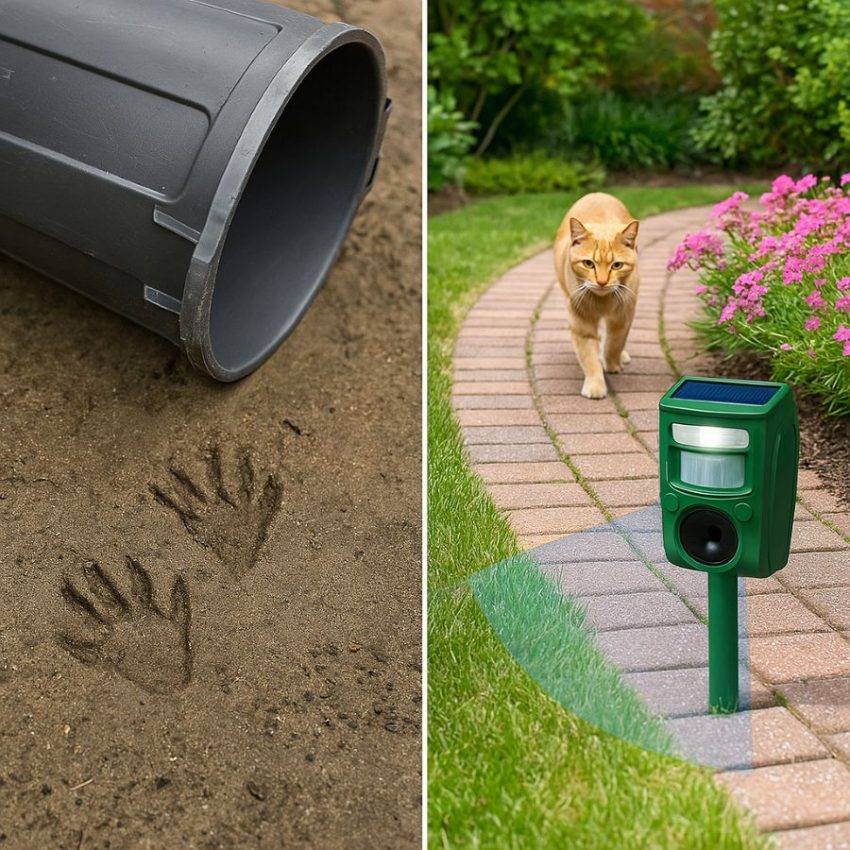
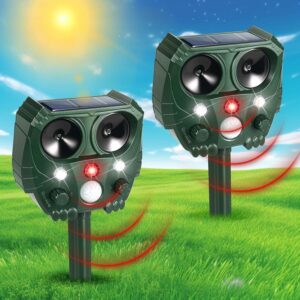
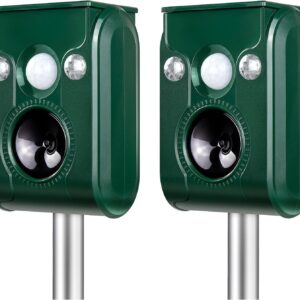
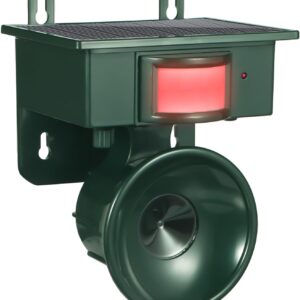
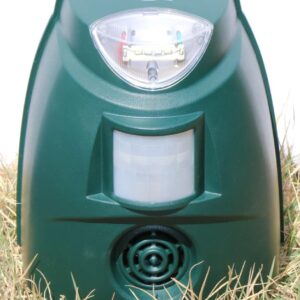
Reviews
There are no reviews yet.